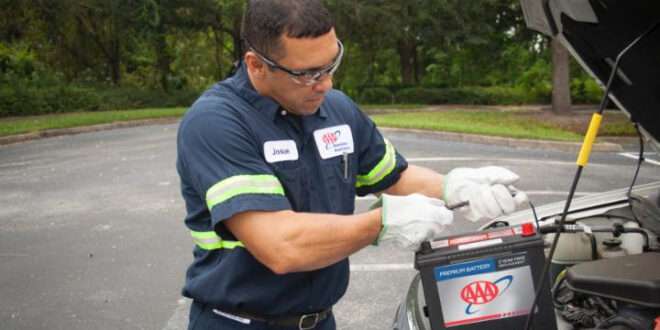Extremely high temperatures can strain your vehicle, affecting performance and driving experience. Overheating, tire blowouts, and battery issues are common in such conditions.
An analysis of AAA roadside data shows that vehicles 10 years and older are twice as likely to end up stranded on the side of the road compared to newer vehicles.
AAA offers the follow tips to avoid heat-related car trouble.

1. Test your battery and, if necessary, replace it BEFORE it dies
Most batteries last 3-5 years, and each day of extreme weather pushes a battery closer to its end. A battery on the brink of dying rarely warns a driver before it fails, but having a simple battery test will indicate whether the unit is good or needs replacement. Extreme heat can kill a battery.
2. Make Sure Tires Are Properly Inflated
Driving on under-inflated tires can cause tires to overheat and increase the likelihood of a blowout. This problem becomes even more of a concern when road temperatures are extremely high.
Tires should be checked when the car has not been driven recently, and they should be inflated to the pressure recommended by the vehicle manufacturer – not the number molded into the tire sidewall.
Recommended tire pressures can be found in the owner’s manual or on a sticker normally located on the driver’s door jamb or the inside of the glove compartment door. Some vehicles use different pressures for the front and rear tires.
While checking the tire pressures – including the spare – drivers also should inspect the tire treads for adequate depth and any signs of uneven wear that might indicate a suspension or alignment problem.
Inspect tires at least monthly
AAA recommends motorists get into a routine of checking their tires on a monthly basis, not only as an important safety step but to protect their investment. If potholes and road debris are a common hazard or drivers routinely drive long distances, tires should be inspected even more frequently.
The more frequently these inspections are performed, the easier it will be to find a small problem, such as a nail in your tire, and have it fixed before it becomes a safety risk or a more expensive fix.
3. Check all engine fluids
When fluid levels are low, the possibility of overheating increases. Drivers should check all vehicle fluids including engine/radiator coolant, motor oil, transmission fluid, power steering fluid and brake fluid to ensure they are filled to the appropriate levels.
If any fluids need to be topped off, be sure to use the type of fluid specified in the owner’s manual. Engine cooling system failures, such as the radiator, thermostat or water pump or engine parts such as the timing belt, most prominently in vehicles age 10 years and older.
In heavy traffic during a heat wave, don’t tailgate the car ahead. It can stress a car’s cooling system when it sucks in hot exhaust fumes. Should you overheat, pull off the road, shut the engine off immediately and allow the vehicle to cool.
4. Stock a Summer Emergency Kit
Even with proper preventive maintenance, summer breakdowns can still occur, so AAA recommends every driver have a fully charged cellphone on hand so they can call for help when needed and also keep a well-stocked emergency kit in their vehicle to ensure everyone’s safety while they’re waiting for help to arrive.
AAA says the emergency kit should include water, non-perishable food items, jumper cables, a flashlight with extra batteries, road flares or an emergency beacon, basic hand tools, and a first aid kit.
 WQIO Ohio's Super Station
WQIO Ohio's Super Station


